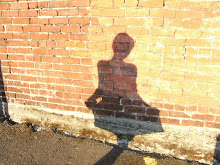So instead of regaling with of-the-moment history makers, I will divert with history already made. And there is no shortage of history in Laurelhurst.

Each resident that I have spoken with directs me to the same source when it comes to Laurelhurst’s history: Christine Barrett. Indeed, she has written a book on the subject: A History of Laurelhurst. Barrett herself directs me to, among other sources, historylink.org, an online encyclopedia of Washington state history. It turns out that history does, indeed, repeat itself.
Such hot-button issues commonly found in the community today are not new concerns. Transportation, land use issues and wildlife preservation are veritable fixtures in Laurelhurst discussions. Some, such as the following description of the Community Club’s agenda, are more relevant than ever.
“Land issues, however, remained high on the Club's agenda. Large institutions such as Battelle Memorial Institute, Pacific Theological Seminary, and Children's Orthopedic Hospital made incursions into the neighborhood.” History Link
And if Laurelhurst feels isolated now, just imagine how it must have felt at the turn of the 20th century:
“Laurelhurst in the mid-1900s was about as far away from "city life" as any outlying neighborhood. The Laurelhurst Launch and other boats remained the primary link to Madison Park and downtown. Groceries, block ice, and newspapers were usually delivered to the door by tradespeople. If one attended the opera, symphony, or a dinner party "in town" it was necessary to catch the last 11:00 p.m. Launch back to the peninsula or sleep on the beach at Madison Park.” History Link
Though Laurelhurst has come a long way since a sleepover at Madison Park was a viable option for après opera, the community has managed to keep their small-town atmosphere. And where other, once-natural areas of Seattle have given way to tall buildings and wall-to-wall concrete, flora and fauna continue to be a part of Laurelhurst’s community.
“Today, by some miracle, a large portion of this urban enclave remains productive and alive with native plants and animals. Harry W. Higman and Earl J. Larrison, in their "Union Bay: The Life of a City Marsh," write that Union Bay vegetation has been "self introduced" and the influence of humans relatively limited.” History Link

Though the starring roles may have changed in this one-time “Duwamish Indian seasonal playground” and “aboriginal hunting and fishing paradise,” the prevailing tone continues to lead. History Link
As I said, perhaps that sign on the Community Center’s front door was only out to get me on this gray, blustery morning. Joggers and dogs were quite undisturbed. Downy haired and prancing as if at a dog show, poodles, greyhounds and Labradors alike do wonders for a disappointed heart. My spirit lifted with each buyout trot. They are proud of this land.
Pictures from History Link

No comments:
Post a Comment